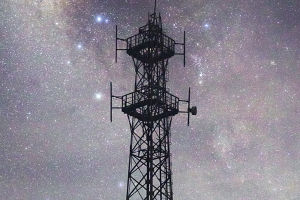Dear Lykkers! Imagine standing on the barren surface of the moon, looking up at the vastness of space, and seeing Earth—a glowing blue marble suspended in the infinite black sky.
The view of Earth from the moon is one of the most iconic and awe-inspiring sights ever captured, a reminder of the planet’s fragility and beauty amidst the cosmic expanse.
This unique perspective, first witnessed by astronauts during the Apollo missions, offers a humbling and breathtaking view of our home. Why not dive into the experience of viewing Earth from the moon and how it has captured the imagination of people worldwide.
The Iconic "Earthrise" Moment
The first photograph of Earth taken from the moon’s surface, known as "Earthrise," was captured by astronaut William Anders during the Apollo 8 mission in 1968. As the spacecraft orbited the moon, Anders saw Earth emerging from behind the lunar horizon, rising like a colorful orb in the sky. This moment marked a profound shift in humanity's perception of itself—a planet suspended in space, surrounded by nothing but the void.
The colors in the image stood out: Earth’s vibrant blues and greens contrasted sharply with the gray, dusty surface of the moon. The vast oceans, white clouds, and the hint of continents made Earth look alive, a stark contrast to the desolate and cratered lunar landscape.
Michael Collins Recalls the View of Earth From the Moon
Video By World Science Festival
What Makes Earth Look So Unique from the Moon?
From the moon, Earth looks relatively small, but its unique features are striking. The blue oceans are most prominent, reflecting sunlight and giving the planet its characteristic color. Swirling white clouds create dynamic patterns, and landmasses are faintly visible beneath them. The entire planet is enveloped in a thin layer of atmosphere, visible as a delicate glow around the edges.
The view changes depending on the moon’s location relative to Earth. Unlike on Earth, where the moon rises and sets, the Earth remains stationary in the lunar sky, slowly rotating throughout the day. This creates an ever-changing view of Earth’s surface, with different continents and weather patterns constantly shifting.
Viewing Earth from the Moon: A Symbol of Unity
The sight of Earth from space, particularly from the moon, has long been a symbol of unity and shared responsibility for our planet. When you see Earth from such a distance, it’s easy to forget national borders, conflicts, or differences. Instead, you’re reminded that we all share the same fragile planet, spinning in space, with nowhere else to go.
Many astronauts have described experiencing a profound sense of interconnectedness when viewing Earth from space. This phenomenon, known as the "Overview Effect," highlights the importance of protecting our planet and its ecosystems.
A Glimpse into the Future: Lunar Tourism
As space exploration advances, lunar tourism may one day become a reality. Companies like SpaceX and Blue Origin are working toward making space travel accessible to civilians, which could include trips to the moon. Just imagine being able to stand on the lunar surface and witness the Earthrise for yourself!
While this might still be years away, the idea of future generations experiencing Earth from the moon is both thrilling and inspiring. The iconic view that once belonged solely to astronauts may one day be accessible to people all around the world.
The view of Earth from the moon is more than just a beautiful sight; it’s a reminder of the planet’s place in the universe and humanity’s shared responsibility to protect it. Whether captured in the famous Earthrise photograph or witnessed firsthand by astronauts, this cosmic perspective continues to inspire wonder and reflection.
As we look to the future of space exploration, the view of Earth from the moon will remain a powerful symbol of unity, fragility, and hope for generations to come.


